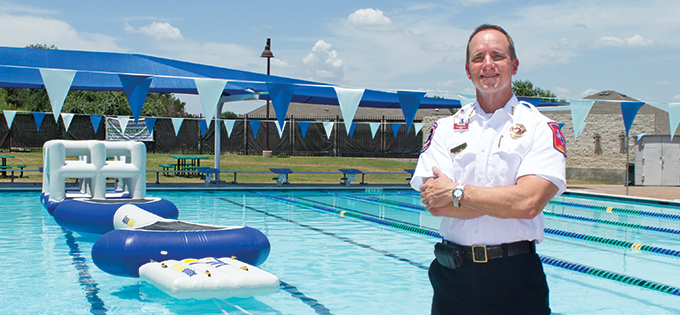Updating your browser will give you an optimal website experience. Learn more about our supported browsers.
Championing Safety in the Water and Out
Williamson County EMS works to raise awareness and education about pool safety.
Story and photos by Kelly E. Lindner
Less than two inches of water. That’s all it takes for a young child to drown. “In 2015, three children under the age of 4 drowned in pools in Williamson County,” says Kenny Schnell, director of Williamson County Emergency Medical Services (WCEMS) since 2008. “We want to get that number down to zero.”
Preventing these tragedies is why WCEMS began coordinating the Child Fatality Review Team in 2010 to help educate the public on drowning prevention and water safety.
In 2016, WCEMS asked the Williamson County Commissioners Court to declare April 1 “April Pools Day” to help keep drowning prevention on the forefront of everyone’s mind before the swimming season starts each year.
“April Pools Day promotes staying close, being alert and watching children in and around the pool,” Schnell says. “Through awareness, our goal is to highlight as many proven water safety steps as possible to assure a safe and fun experience, because you can never know which one might save a child’s life — until it does.”
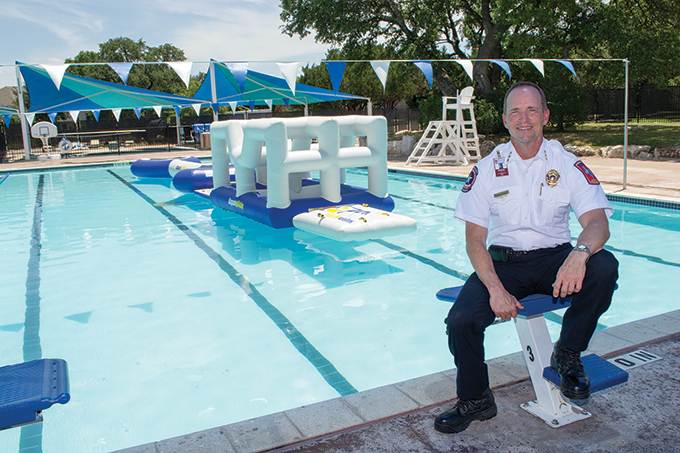
Kenny Schnell, director of Williamson County Emergency Medical Services, stands before Sendero Springs, one of the many community pools in his coverage area.
In addition to public education about water safety, WCEMS is also prepared to respond to flooding emergencies. Its Swiftwater Rescue Team (created in 2006) is made up of eight paramedics who train monthly just in case the creeks and rivers rise.
“When flooding happens, you can never have too many resources,” says John Hamilton, a WCEMS paramedic and member of its Swiftwater Rescue Team. “Memorial Day of last year stands out for me the most. There was water in places I never thought there would be water — places that didn’t make sense. It’s amazing how water can be both powerful and destructive.”
Saving Lives is a Team Effort
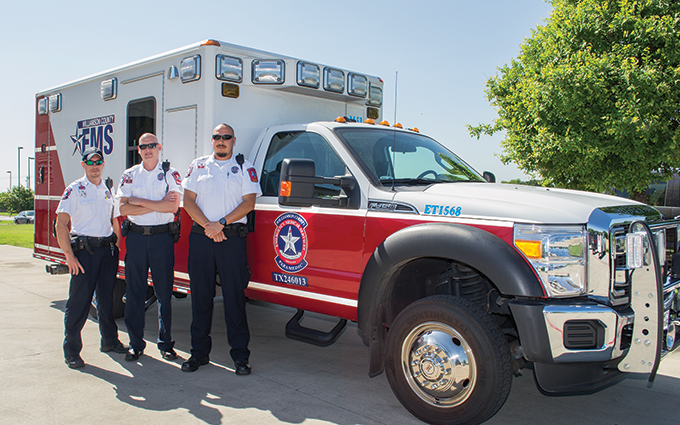
Ready for anything: (From left to right) WCEMS paramedics John Hamilton, Wes Kukulski and Seth West await the next emergency call.
When the ambulance delivers a patient to the hospital, it’s not the end of the story for WCEMS. The Health Data Exchange program started by Schnell in 2013 fosters real-time data sharing between paramedics and hospitals. By promoting easier tracking and sharing of patient data, histories, outcomes and more, the program helps increase efficiency, decrease response time and plan future improvements.
“When we get outcomes from the hospital, we can see what procedures work,” Schnell says. “We can also use this data to drive our education and injury prevention outreach.”
Currently, the project includes 18 other EMS programs, 11 Texas counties and the St. David’s and Seton hospital systems, making it the largest such project in the United States.
WCEMS is in the process of getting paperwork signed by Baylor Scott & White as well, says Dr. Jeff Jarvis, medical director of WCEMS since 2011. “By the end of the year, we hope to have all three major hospitals signed up,” Dr. Jarvis says.
Analyzing this data has led to other safety initiatives, including Take10 CPR and the Community Health Paramedics program, making ordinary citizens a part of the team. Take10 CPR is a nationally recognized CPR training program that can be taught in 10 minutes. The free program teaches compression-only CPR, meaning it doesn’t require mouth-to-mouth resuscitation.
“With this initiative we have trained over 1,000 people in compression-only CPR,” says Mike Knipstein, WCEMS deputy director. “With this we can partner with the public to increase cardiac arrest survival
in Williamson County.”
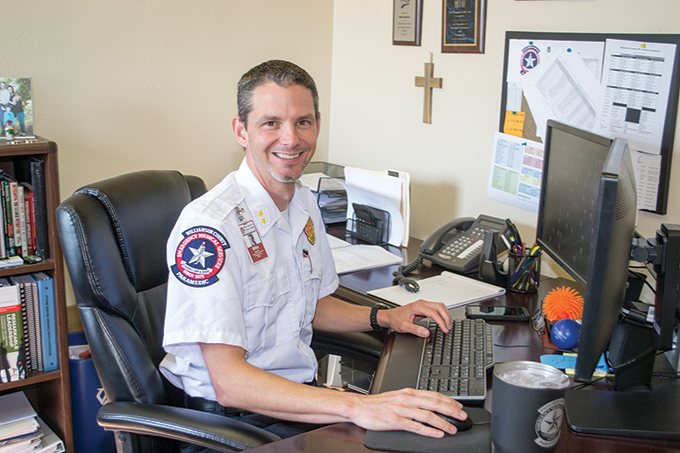
WCEMS Deputy Director Mike Knipstein is hard at work in his office.
WCEMS created the Community Health Paramedics in 2012 to provide non-emergency care to Williamson County citizens who have chronic ailments, are underinsured or uninsured, are repeat 911 callers or have recently been discharged from the hospital. The program of follow-up and home visits gives these patients self-care education and helps reduce hospital readmissions.
“Just a few short months after implementation, there was a significant decline in hospitalizations and 911 activations from members enrolled in the program,” Schnell says.
And WCEMS has received national recognition for its efforts. They won the 2014 American Heart Association Mission Lifeline EMS Award (silver) and the 2015 and 2016 American Heart Association Mission Lifeline EMS Award (gold) for their ability to identify, treat and transport heart attack victims to heart surgery centers.
Paramedics For the Community
Schnell, Knipstein and Dr. Jarvis all started out as paramedics with WCEMS: Schnell and Knipstein in 1994, and Dr. Jarvis in 1988. He went to medical school and became an emergency room physician before returning to WCEMS to serve as medical director. In 2014, he was named the Texas EMS Medical Director of the Year.
That same year, Schnell was named the Texas EMS Administrator of the Year. In fact, the WCEMS staff is made up entirely of paramedics. This common background fosters a culture of comradery in the organization.
“I feel that our department is a big family,” Schnell says. “Decisions are made collectively and not in a vacuum. Every voice is heard.”
When the time comes to retire, they’re also excited about the retirement plan Williamson County provides through TCDRS. “It’s a phenomenal retirement system,” Schnell says. “I like that it’s mandatory and automatic. Out-of-sight-out-of-mind saving is a good thing.”
Story originally published in Summer 2016.
Related Content
Get more information on why TCDRS is a model plan when it comes to retirement.
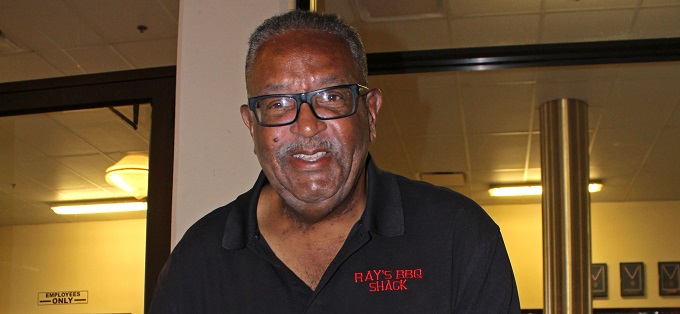
01.06.2017
Cooking up a second career in retirement
Retired Harris County Deputy Sheriff Rayford Busch spent decades perfecting his barbecuing process. So when he retired, he was ready ...
Read more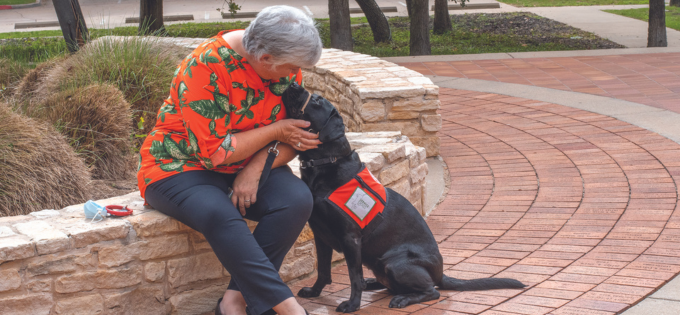
09.14.2023
Parker County Courtrooms are Going to the Dogs
Meet Parker County's victim assistance dog, East, and her handler, Lisa Mehrhoff.
Read more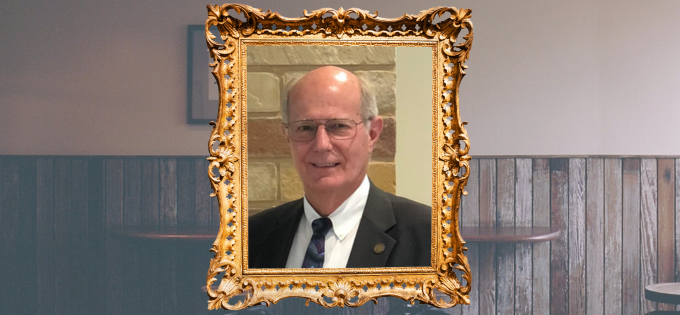
10.11.2023
A Handcrafted Retirement
TCDRS member Philip Goodwill has taken steps to ensure his retirement someday will be as well-crafted one of his custom furniture pie...
Read more